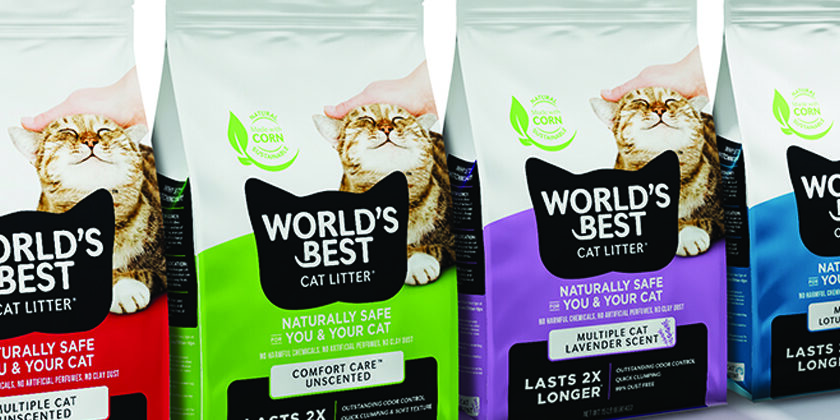Mar 13, 2024
Pet Tricks by Robin Lauffer
There’s no doubt, we’re living in trying times – and it’s affecting our collective psyche.
But there’s good news for us pet owners. Studies have found that interacting with animals can decrease stress levels, anxiety and depression. They can ease loneliness, increase feelings of social support, encourage playfulness and boost your mood. The fact is – pets are the perfect antidote to many of society’s ills. No wonder we treat them as cherished members of our family.
We hold our pets so close, we’ll often project our needs and wants onto them. This tendency to humanize our pets has meant that many of the trends we are seeing in humans – from health and wellness to food, sustainability to the influence of social media – are also trending in pets.
Need proof, take a look at the 10 pet market trends below – each one a mirror image of what’s happening with us mere humans.
1) Focus on Proactive, Holistic Health
As consumers’ understanding of the link between physical, emotional and environmental health grows, they’re thinking about, and practicing, health in a multi-dimensional, holistic way. Increasingly, they’re applying this evolved attitude and behavior to their pets.
Furthermore, whether due to Covid, rising insurance rates and veterinary costs, or simply the desire to strengthen & avoid illness, they’ve become more proactive about their pets’ health.
2) Mental Health
Pets are not immune to many of the same issues humans are facing. Behavioral problems in pets are at an all-time high, and they aren’t predicted to drop anytime soon.
With more and more pets being treated like members of the family, animal mental health is becoming a larger topic of conversation, and a rapidly growing market.
3) Alternate Therapies
Just as consumers are turning to alternative or complementary therapies for themselves, the more cutting-edge are turning to alternative therapies for their pets, especially if their pet doesn’t respond to traditional medicines or procedures.
The American Kennel Club recommends the following alternative therapies: massages, chiropractic treatments, acupuncture/acupressure, sound therapy and aromatherapy.
4) Tech Enabled Wellness
Technology gives pet owners new ways to keep their pets safe, healthy, and amused. High end items such as pet treadmills and cameras, smart litter boxes and treat dispensers are getting attention and growing in popularity.
Within PetTech, wearables, such as RFID collars, GPS trackers, and motion sensors, is one of the fastest-growing markets in the pet industry, projected to generate $4.6 billion in revenue by 2027, with a CAGR of 14.3% (Grand View Research)
5) Desire for Personalization
Consumers are looking for products that are personalized to their unique diets and health needs. And now, they’re seeking out the same for their pets. This has led to a rise in pet food brands that offer tailored diets and supplements to meet specific pet health needs.
Personalization services run the gamut from simple quizzes to online chats to full blown nutritional consultations with vets.
On the horizon, look for continued growth of at-home pet DNA testing kits that enable people to test their pet’s breed, in-breed characteristics and genetic dispositions.
6) Clean/Free-From/Non GMO
The natural and clean label trend has expanded from human food to pet food and supplements. Pet parents, ever more vigilant about their pets’ health, are buying into brands that highlight ingredient quality and clearly call out those ingredients that are left out.
As in many consumer categories, safety and quality can now also be defined by what’s not inside.
7) Science Backed and Clinically Proven
While “clean” is a growing trend in pet, clean plus clinical efficacy is the next battleground.
Consumers are becoming bolder in questioning and researching claims and demanding hard data and evidence.
Science-based pet foods are typically created by nutritionists, veterinarians, and scientists, all working together to make foods with a high standard for quality and consistency that are “proven” to deliver essential elements to your pets.
8) Farm to Feed
Similarly, the human farm to table trend has emerged in pet under the guise of farm to feed.
Raw, natural and human grade ingredient brands are evoking idyllic, unadulterated farm life in their brand names, imagery and claims. In addition, a growing number of brands are touting ethics, eco-consciousness and full farm to feed traceability.
9) Ethics and Sustainability
Having become more conscious consumers in their own lives, many pet owners are seeking out ethical & sustainable pet food, packaging and production practices.
Pet products identified as “certified human raised and handled” grew by 110% over the last 2 years to $11 million in sales. “Ethical” products grew 48% to $11.7 million, while “cruelty-free” products increased by 10% to account for $18 million in sales.
10) Plant and Alternate Proteins
Like with human food, plant-based ingredients and alternative proteins are becoming more mainstream in the pet food market. Future Market Insights projects plant-based pet foods to reach $57.4 billion by 2032.
Brands are embracing novel protein sources, with algae, yeasts and insect proteins being just some of the alternatives. In addition to the real (and perceived) health benefits, plant based and alternative ingredients are trending because of their lower environmental impact.



